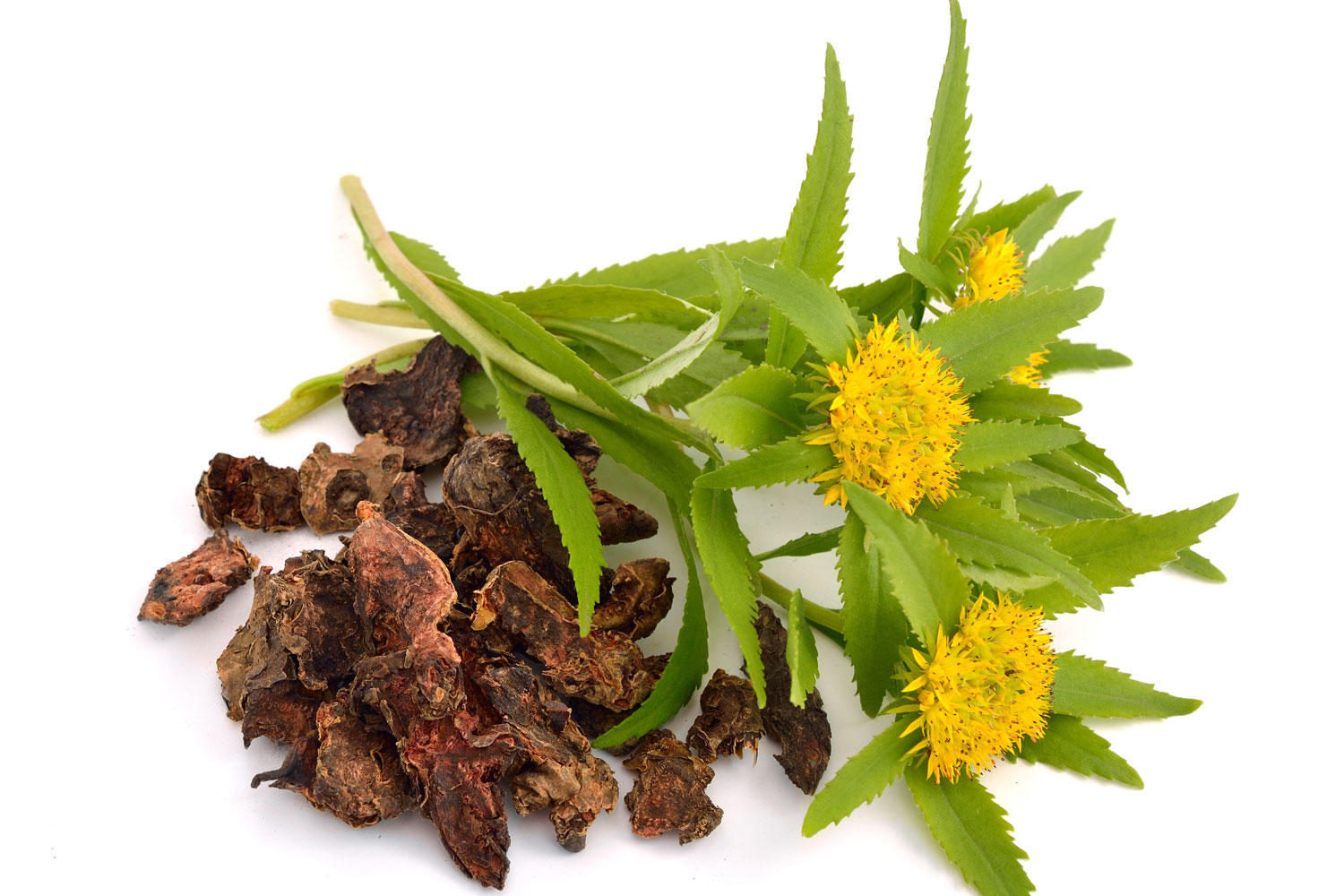Stressed? Exhausted? Winter blues? When it comes to adaptogens for treating these conditions, rhodiola (aerial portion and dried root shown above) is hands down one of my favorites. It is both gentle and yet powerful at the same time. Rhodiola enhances endurance, reduces fatigue, alleviates depression and stress, improves sleep, enhances athletic performance and alertness, counteracts altitude sickness, and is a heart, liver and nerve protectant.
If a specific physiological, chemical or biological stress is anticipated, such as an athletic competition, arduous trek, altitude sickness, or possible exposure to chemical toxins, begin taking rhodiola several weeks before and continue throughout the duration of the event.
Rhodiola is also used for nervous system disorders, ADHD, gastrointestinal complaints, coughing of blood, pneumonia, lowering fevers in colds and flu, and balancing blood sugar. It treats exhaustion headaches, minor hypotension, hemorrhoids, irregular heartbeat, erectile dysfunction, amenorrhea, and infertility. As well, it protects against chemotherapy and radiation. It relieves stiff muscles and spasm. As a mouthwash or gargle, it treats inflammation of the mouth and throat.
If that’s not enough, I have found rhodiola to be particularly helpful for menopausal hot flashes. In this case higher doses may be needed – up to 1000mg three times a day – to get both hot flashes and night sweats under control. In this case, I have seen that liquid rhodiola in capsules or tincture forms are too heating, so use tablets instead.
Precautions While Taking Rhodiola
Rhodiola is extremely astringent, a quality not generally noted. This doesn’t seem to diminish the many positive effects experienced by its users, but needs to be considered when taking with other herbs and supplements. It may also account for the few minor gastric disturbances experienced by some.
Harvest and Cultivation Concerns
There are many rhodiola species (most of which are found in China and Tibet, but also in North America and mountainous parts of Europe). All of these resemble sedum (Sedum spp.), the popular garden ornamental. They are members of the Crassulaceae family and many are used interchangeably.
Because sensitive habitats are causing the Chinese to limit harvest and sale of wild rhodiola, supplies are being made available from North American cultivated rhodiola that conform to Good Agricultural and Collection Practice for Herbal Raw Materials (GACP). This is bound to ensure that herbal raw material will be correctly identified, non-adulterated, has accurate representation regarding the quality of the product, and is sustainably harvested.
Rhodiola Fact Sheet
Rhodiola Root Sedum roseum (formerly known as: Rhodiola rosea)
Also named: Arctic root, rose root, golden root, Rhodiola Radix
Family: Crassulaceae
Energy and flavors: Neutral, sweet, bitter
Organs and channels affected: Heart, Lung, Liver
Chemical constituents: The phenylpropanoids rosavin, rosin, and rosarin (specific to R. rosea); salidroside (rhodioloside), tyrosol; rodiolin, rodionin, rodiosin, acetylrodalgin, tricin; rosiridol, rosaridin; daucosterol, beta-sitosterol; chlorogenic and hydroxycin- namic, gallic acids
Properties and actions: Adaptogenic tonic, antidepressant, antiviral, antioxidant, astringent; tonifies Qi and Yin, augments Essence
Contraindications: Pregnancy, nervousness, insomnia, hypertension; avoid if on MAO inhibitor antidepressants
Dose: Extract standardized for 1% rosavin, 360-900mg daily is the standard dose. Extract standardized for 2% rosavin, 180-300mg daily. Extract standardized for 3.6% rosavin, 100-170mg daily. Tincture (1:2 @75% ABV), 40-60 drops TID.
For short-term purposes such as an exams or athletic competition, take three times the dose. It may only need to be taken for as short as one day (for acute conditions) or up to four months. Do take periodic intervals of abstinence if using it for chronic conditions.

